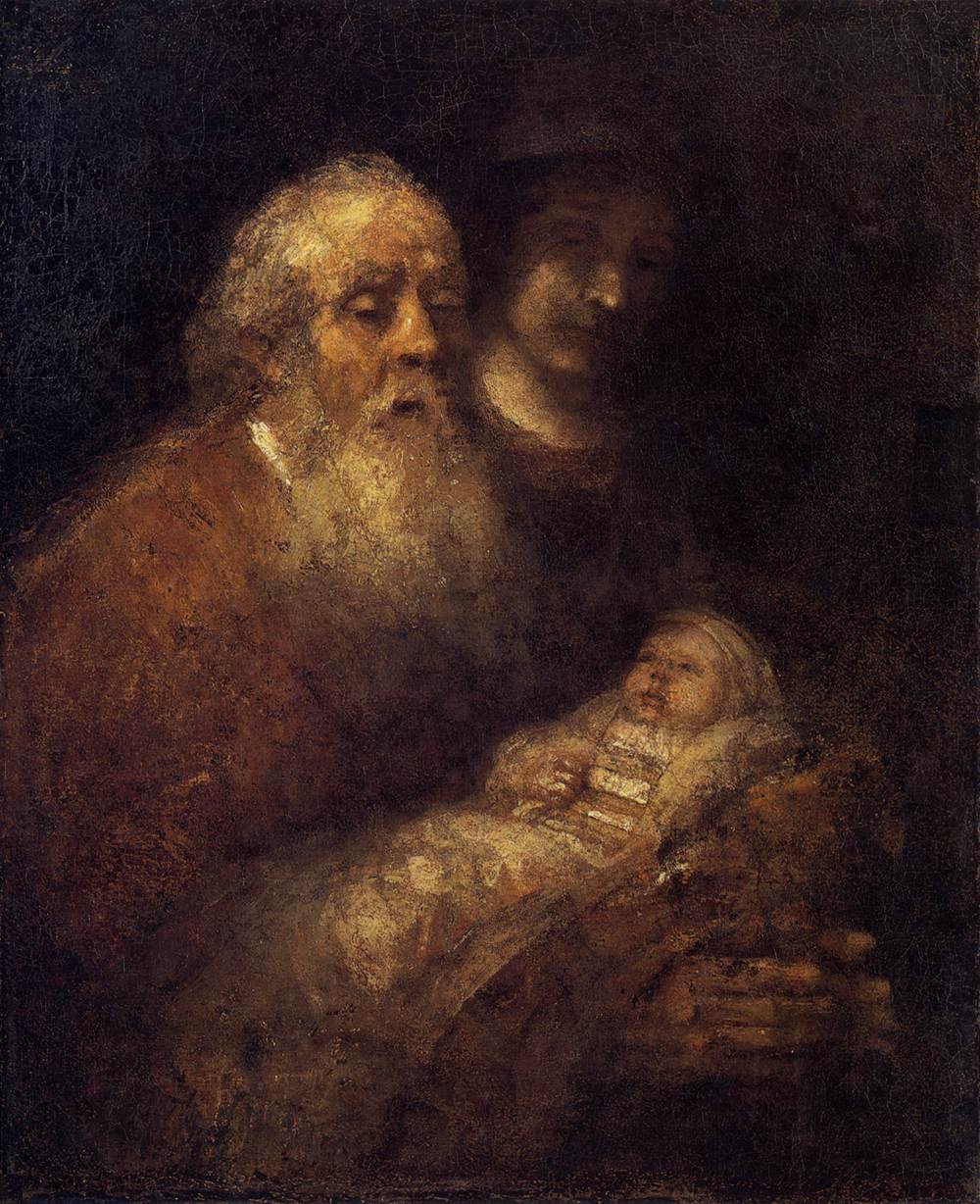The Significance of Simeon
“Simeon in the Temple” by Rembrandt
Simeon is one of my favorite characters in the Bible. I mean the one in Luke 2, not the one in Genesis.
Growing up we had a record called “The Glory of Christmas”, which, perhaps tinted by rosy retrospection, I remember as a delightful musical retelling of the events surrounding Jesus’ birth. Before the days of iTunes and playlists, we had this album on repeat on the record player for several of my childhood Christmases. Naturally, this incessant replaying took its toll. The vinyl became scratched and the needle began to skip at certain places. One such skip, the one etched in my memory, was at the point when the narrator told of Mary and Joseph going to the temple to dedicate Jesus.
“They met there an old man named Simeon.” Scratch! “They met there an old man named Simeon.” Scratch! “They met there an old man named Simeon…”
Of course as kids we thought this was hilarious. We’d wait eagerly for it, and then giggle as it skipped and repeated the line over and over till one of us stomped or smacked the stereo to move it ahead. This sequence was almost as much a part of our holiday festivities as Christmas morning stockings, manger scenes, and going to grandma and grandpa’s house. It was a Christmas tradition.
Nostalgia might be part of the reason for my fondness towards Simeon, but there’s more to it than that. Simeon, as he is portrayed in Luke 2:22–35, is a wonderful character with multiple layers of significance, not only to Luke’s unfolding narrative, but also for us today.
“He was waiting for eschatological comfort, salvation, and revelation, promised in Isaiah and through all the Hebrew Scriptures. And now the waiting is over.”
Luke portrays Simeon as exemplary in the way he read and reflected upon the Old Testament. This devout and righteous man was waiting in Jerusalem, longing expectantly for Scripture’s fulfillment. Isaiah 40 may be the particular prophetic text underlying Luke’s phrase, “waiting for the consolation of Israel” (v 22). For the language is similar to Isa 40:1 (in the LXX), other possible allusions to Isaiah occur in the nearby context, and Luke quotes directly from Isaiah 40 just a few verses later (3:4–6).
Nevertheless, whether a particular reference is in mind or not, Simeon seems to have been expecting comprehensive fulfillment. In what has become known as the Nunc Dimittus, Simeon’s poetic blessing to God a few verses later, Simeon recognizes the fulfillment of God’s promised salvation as “a light for revelation to the Gentiles, and for glory to your people Israel” (vv 30–32; see Isa 9:1–2; 40:5; 42:6; 49:6; 52:10; etc). He was waiting for eschatological comfort, salvation, and revelation, promised in Isaiah and through all the Hebrew Scriptures. And now the waiting is over.
Simeon’s hope is realized at this marvelous, pivotal moment in Simeon’s life, in Luke’s Gospel, and in human history. The Holy Spirit had revealed to him that he would not see death until he first saw the Lord’s Christ, the Messiah (v 26). Now he sees a young couple from Nazareth dedicating their baby boy at the temple and offering two birds as atonement, a detail Luke mentions probably to point out that they did not have the means to offer the customary lamb and one bird (v 24; see Lev 12:8).
Simeon is not witnessing a political movement or military revolt to overthrow Rome. He does not experience a revival of strict law-keeping led by the Jewish religious leaders of the day. Nor is that the kind of fulfillment he has been expecting. All that Simeon has longed for is wrapped up in this baby he now holds in His arms.
“Shaped by Scripture, the perspective Simeon represents does not only look retrospectively at the long-awaited hope that he is seeing realized in this moment. It also looks forward to what will come.”
Shaped by Scripture, the perspective Simeon represents does not only look retrospectively at the long-awaited hope that he is seeing realized in this moment. It also looks forward to what will come. Simeon blesses Mary and Joseph and says to Mary, “Behold, this child is appointed for the fall and rising of many in Israel” (v 34). Perhaps alluding again to Isaiah (8:14; 28:16), this looks ahead to the coming impact of the incarnation, and to the varying responses to the anointed Savior. The rest of Luke’s Gospel and the rest of the New Testament unpack the details and theological implications of what is to come for this child.
I will always think of the story of Simeon as a Christmas story, not only because of the nostalgic skipping record, but also because of the wondrous picture of fulfilled expectation and realized hope it represents. Though our vantage point is different from Simeon’s, we too see Jesus as the fulfillment of all that the Old Testament anticipates. Scripture is the backdrop against which God reveals the glory of Jesus’ birth, and of his life, death, and resurrection. The Lord’s Messiah has come to comfort and save his people. Like Simeon, we rejoice in his coming, during Advent season and all throughout the year. And like Simeon, we long for the day when he will come again.

